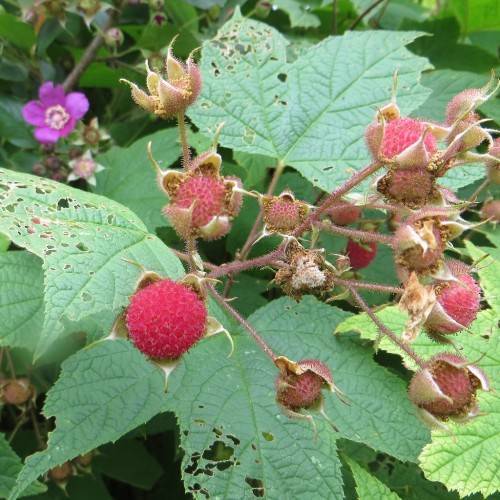
purple-flowering raspberry
Rubus odoratus
Cycle:
Perennial
Watering:
Minimum
Hardiness Zone:
3 - 8
Flowers:
Flowers
Sun:
Full sun,part shade
Soil:
Sandy Loamy
Fruits:
Fruits Ready In Summer
Edible:
Yes
Leaf:
Yes
Growth Rate:
Low
Maintenance:
Low
Drought Tolerant:
Yes
Thorny:
Yes
Invasive:
Yes
Care Level:
Medium
watering
Watering for a Rubus odoratus, or Purple-Flowering Raspberry, should be done at least twice a week. Water around the base of the plant, avoiding wetting the foliage if possible. It is best to water early in the morning, when temperatures are cooler and less evaporation occurs. Depending on the moisture levels in your area, you may need to water less during periods of higher rainfall. It is also important to check the soil around the plant and ensure it does not become overly saturated and muddy - the plant should not stand in water. You will likely need to increase watering frequency when the plant is actively flowering.
sunlight
Purple-flowering raspberry (Rubus odoratus) grows best when it is provided full, direct sunlight for at least 6 hours per day. It will also tolerate partial shade, especially during the hottest part of the day. Ideally, this plant species should be placed in an area that is well-lit with direct sunlight in the morning and dappled shade in the afternoon. If planted in an area that does not receive enough light, this plant may become leggy and will not produce as many flowers or berries.
pruning
Purple-flowering raspberry (Rubus odoratus) should be pruned in early spring, just before the new flush of growth appears. Prune back canes that are over 2 years old to the ground since they will not produce blossoms or fruit. During pruning, remove any unhealthy or dead wood, as well as thin out overly dense canes. You can help promote the growth of larger blossoms and fruit by reducing the total number of flowering canes to between 5 and 7. Finally, cut back any unruly canes that are growing in a way that makes them susceptible to diseases or pests.
